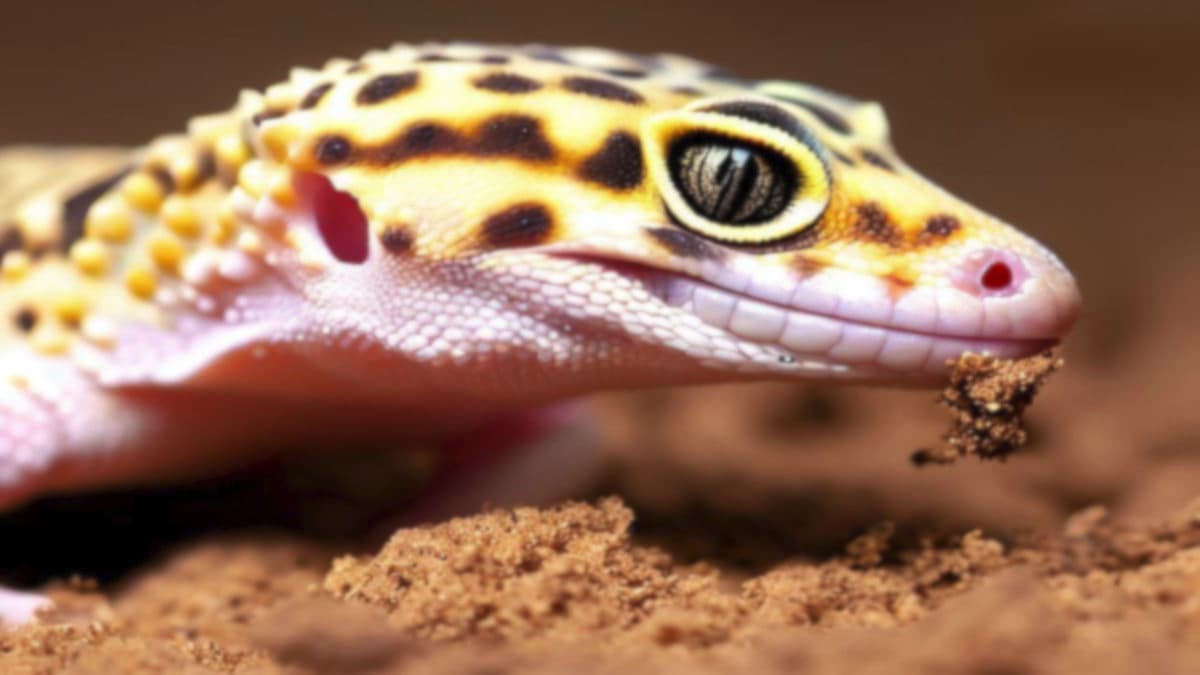
There is a ton of debate from leopard gecko owners on calcium sand. So, what is calcium sand anyway?
Calcium sand is made up of calcium carbonate. Usually 100% calcium carbondate – but check the label. So this is the same stuff that is in antacid tablets. So it is technically edible. But no, I am NOT recommending that you buy a bottle of Tums, crush them up, and drop them in your leopard geckos tank!
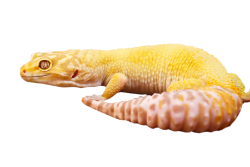
Geckos should technically be able to digest it. As you will probably know calcium is a supplement that geckos need and don’t get enough of in their diet. Whenever a leopard gecko gets a little bit of this sand in their mouth they should be fine to digest it. Many lizard owners will advise you to go ahead and purchase calcium sand for your leopard geckos tank. But read on for my (bad) experience with it!
Pros & Cons of Calcium Sand
Pros
- Easy to clean.
- Looks nice.
- Contains calcium which is lacking in many leopard gecko’s diets.
Cons
- Expensive (about $12-15 at Petsmart & Petco).
- High risk for impaction and even death.
- Can harbor pathogens.
- Will stain geckos skin.
- Doesn’t conduct heat very well.
My Experience With Calcium Sand
So, let me tell you a quick little story about calcium sand. I used to buy uromastyx lizards about 3 years ago. Yes, I am aware that leopard geckos and uromastyx are completely different reptiles, but you’ll learn about calcium sand in this story. I bought them from a local pet store in Overland Park, Kansas which is about 40 miles away from here. I was fascinated by these big lizards. So I picked one out and brought it home. I had him for about a week.
One day I woke up to feed him and noticed that he wasn’t coming out of his hide like he usually does. I lifted up his hide and noticed that he wasn’t moving. As you might have guessed he was dead. I soon picked up the phone and told the pet store that my uromastyx was dead. They asked me to bring him in and they would replace him. It really sucked picking him up and putting him in a plastic sack. Picking up dead lizards isn’t one of my favorite things to do.
I drove 40 miles back to the pet store and they replaced him with another one. But, they did take the dead uromastyx out and told me that he had got impacted. Can you guess what I was using for substrate? Calcium sand. Really, I thought at the time that maybe the lizard was already weak or something when I got him, and didn’t really think too much of it.
So, I went home put the new lizard in his tank. He lived for about a week and then I noticed that he was dead too. Seriously, I researched everything about them and knew how to take proper care of them. But, I called up the pet store and told them that I had another dead lizard.
After a while they finally said that it was probably due to the calcium sand he was in. So, how does this story relate to leopard geckos? Well, uromastyx are much larger lizards; their stomach is much bigger. Therefore, they should be able to digest bigger grains of substrate better, if they swallow it by accident. So, if a bigger lizard can’t handle calcium sand this gives me a reason to believe that smaller lizards, such as leopard geckos will have trouble digesting calcium sand too.
Calcium Sand Just Doesn’t Seem To Be Worth It
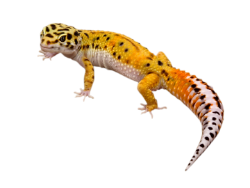
I have checked various sites: reptilesmagazine.com, geckotime.com, and even Yahoo Answers. And guess what? A lot of leopard gecko owners have noticed the exact same thing with calcium sand. They would purchase their geckos (adult size) and then in 1 to 2 weeks their leopard gecko would die after being kept in an enclosure using calcium sand!
Can I use calcium sand for my leopard gecko?
I guess it’s really up to you if you want to use calcium sand or not. I really think it’s bad for them and will never put another lizard in it. I have talked with a number of gecko, bearded dragon etc. owners and for the most part they all seem to agree with me; calcium sand is a bad idea.
What kind of sand should you use for your leopard gecko?
I would go with washed play sand. I have used washed play sand for over 4 years and haven’t had any problems with it whatsoever.
What is calcium sand?
Well, calcium sand is pretty much what it sounds like. It’s sand that’s made up of calcium carbonate. You know those antacid tablets you might take when your tummy’s upset? Yeah, it’s the same stuff!
Is calcium sand good for leopard geckos?
Now, this is where it gets a bit tricky. You see, calcium is something that geckos need in their diet, and they often don’t get enough of it. So, when a leopard gecko gets a little bit of this sand in their mouth, they should be able to digest it just fine. But in my experience it’s proven deadly for my geckos.
Is calcium sand bad for leopard geckos?
Calcium sand is quite pricey, and from my experience there’s a high risk for impaction which can lead to death. It’s like when you eat too much candy and your stomach feels all blocked up, but way more serious for these little guys.
Is calcium sand safe for leopard geckos?
Well, the jury’s still out on this one. Some folks will tell you it’s fine, while others – like me – have had bad experiences with it. You might be okay, but there’s a chance you might not. But if you want to play it safe I would choose a different substrate and avoid calcium sand completely.

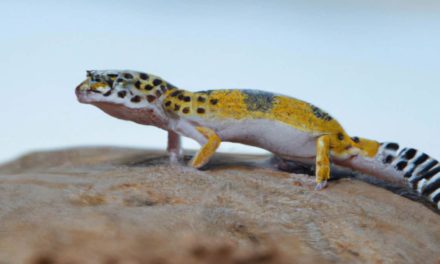
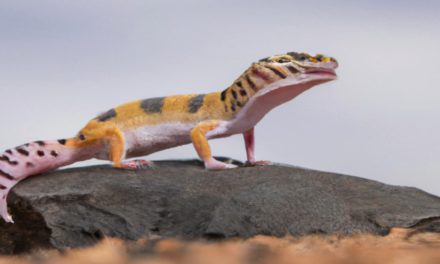
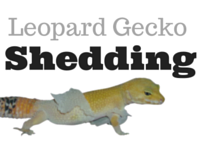
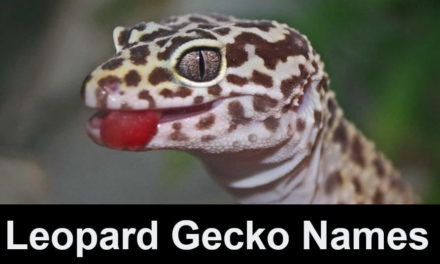










The usage of sand with a leopard gecko is a particularly controversial debate. I have a Leo who has a calcium deficiency (due to improper care at a prior home) so I can safely say that this would not be safe for my gecko personally. I honestly think that the usage of sand depends on the personal needs of the gecko. If you have a healthy adult who is not likely to purposely ingest sand, calcium sand should be fine. However, please take into account the individual needs of your gecko before settling on a substrate 🙂
This was a good read. I’ve had my Gaia (3 1/2 year old leopard gecko) for 3 years and I’ve always had her on that green matting stuff. I hate that green mat. Her claws get caught in it sometimes and sometime her mouth too when she catches crickets.
So, I’ve been on a research marathon (again) and a national pet store (I’m in the UK btw) suggests that Calci sand is perfectly safe for adult leos and a book I had already on how to prepare for and care for a new Leo also suggests that this sand is safe. However, all the articles and blogs written by people who actually care for these animals seems to point in the direction of using something different.
So, Calci sand (and other sands) aside, what else makes a good, safe, natural substrate for these little beauties? (Please don’t say green matting)
I’ve kept my leopard geckos on calcium sand and have never had a problem. Still kicking!
I use custom cut ceramic tiles for both of my leopard geckos. Never had an issue with it. It’s easy to clean and the girls love it. NOT the stick on Vinyl tile, the adhesive can kill them, I can’t guarantee the safety of vinyl. Ceramic tile is cheap and can be custom cut for little to no cost.
Do you still use calcium sand for you leopard geckos?
Eco earth or coconut fiber is made up of fibers. I have seen a lot of experts use Eco earth, and it is safe to digest because it is fiber. The Leopard Gecko youtube channel uses it for all her geckos and doesn’t seem to have a problem.
You did mention that it could harm or even kill the Leopard Gecko, is that correct? If it so, in a scale of 1 to 10, what will be the risk?
Seeing how I am 2 for 2 on dead lizards I would have to say the risk is at least a 7 or 8 out of 10.
Interesting info on Calcium sand. How sad that so many gecko’s must have died because people didn’t understand the best products to use. So how do you address the deficiency in Calcium with the leopard Gecko?
See my article on supplements for leopard geckos. That should help answer your question.
This is great information. I would not have known about the possible harmful effects of calcium sand. How many lizards do you own and how long have you been interested in them? I find lizards really interesting creatures. How much equipment is needed to get started with a lizard?
Thanks again.
I own 4 leopard geckos and 3 bearded dragons.
You need a tank, substrate, hides, night light (see habitats article), and supplements. Should cost about $200 for the enclosure and $20 to 500 dollars depending on the leopard gecko you get. They are better quality ones when you buy them from breeders.
Thanks for the info. I will check those links out for more info. Talk again.
i am sorry for your loss, such a hard lesson to learn – thank for sharing to save the rest from going through that.
Great post on the calcium sand. I once bought my son a lizard and was advised to get this type of sand and it died not long after buying it. First time lizard owner but my kid took it too hard and I didn’t buy another one. He is interested in getting another one now that he is older and i will not be buying calcium sand. What is the easiest type of lizard to take care of that is friendly? Thanks.
I think the easiest lizard to take care of is a leopard gecko 🙂 But, also crested geckos and skinks are very easy to take care of.
Probably a leapord gecko or bearded dragon, these are both great starter reptiles. You could use repti carpet but if you get a leapord gecko eco earth can be used too.